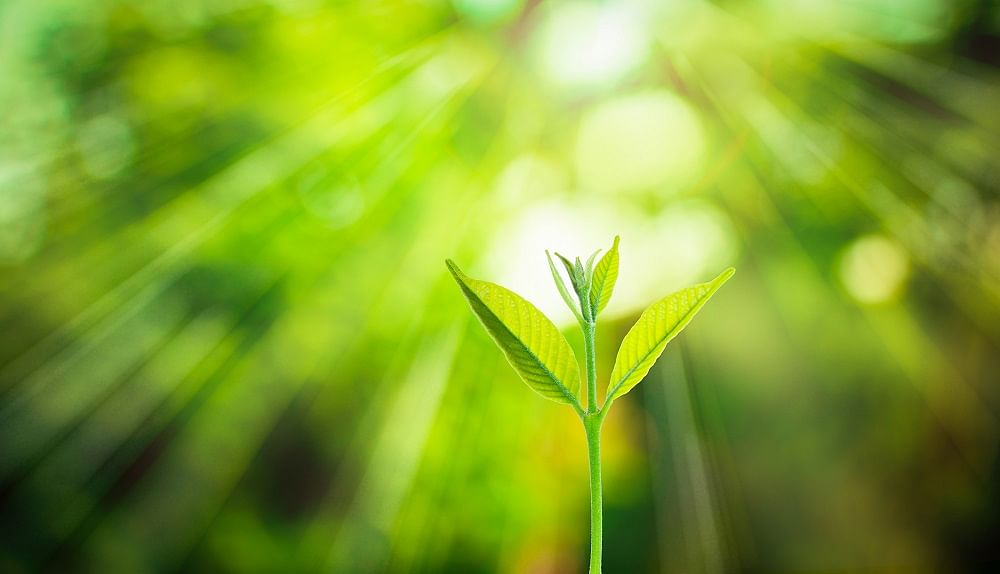
A new molecular investigation of the grass family tree has elucidated the evolutionary links among grasses, which include major crop plants like wheat, rice, corn, and sugarcane. Understanding how crucial crop traits like seed size or disease resistance evolve and, eventually, manipulating these traits to boost crop yields, requires a thorough description of the interactions among the grasses.
Findings of Study:
The vast study, which contains a sample of over 350 grass species, also shows that a type of photosynthesis known as "C4 photosynthesis," which allows plants to harness the sun's energy in hot, dry regions, developed many times throughout distinct grass lineages.
An international team of researchers led by Penn State scientists published a paper describing the study online in the journal Molecular Plant.
"Grasses are the fifth-largest plant family, with approximately 11,000 species," said Hong Ma, the Dorothy Foehr Huck and J. Lloyd Huck Chair of Plant Reproductive Development and Evolution and professor of biology at Penn State, and the team's leader. "These include grasses for your lawn, food crops for humans and livestock, large woody species like bamboo, and, of course, many, many non-crop species." We gathered specimens of a diverse range of grasses from around the world in order to construct the most comprehensive grass family tree to date using nuclear genes to better understand the evolutionary relationships among these important plants.”
The researchers created transcriptomes (DNA sequences of all the genes expressed by an organism) for 342 grass species and whole-genome sequences for seven more. The research team compared gene sequences for 357 species, including members of all 12 grass subfamilies and 231 different grass genera—the level of classification just above species—using existing transcriptome and genome datasets for grasses.
Plant cells, like animals, contain organelles called mitochondria, which have their own genome in addition to the genome found in the cell's nucleus. Plant cells also have organelles called plastids, which, like chloroplasts, perform photosynthesis and have their own genomes. Many previous studies of the grass family tree compared plastid genomes, but the research team focused on the plant's nuclear genome, which is larger and inherited from both plant parents, for this study.
"We compared the DNA sequences of about 1200 genes from the nuclear genomes of the grasses in our sample to build the grass family tree," Ma explained. "We were able to make finer distinctions among grass species and resolve relationships that were previously difficult to interpret by using the larger nuclear genome, which was made possible by recent advances in technology that have greatly reduced the time and cost of DNA sequencing." We believe the grass-grass relationships observed in our study are very reliable, but we acknowledge that it is not perfect because we only examined a small fraction of nuclear genes."
The team confirmed that 11 of the 12 grass subfamilies were monophyletic, which means that all members of the subfamily shared a single common ancestor in the past. The new study suggests that the twelfth subfamily be split into two distinct subfamilies. Some tribes and even genera were discovered to be non-monophyletic below the level of the subfamily.
The study estimates the overall age of the grass family to be around 101 million years old, based on molecular clock estimates that measure time by tracking the number of changes or mutations in DNA sequences, with fossils used to date specific points in the grass history.
It is critical for comparative and evolutionary studies of any large group to have an accurate understanding of the relationships among species. To demonstrate this, the researchers examined genes involved in C4 photosynthesis. C4 photosynthesis is a type of photosynthesis that employs a four-carbon intermediary molecule in addition to the three-carbon molecule typically employed by C3 photosynthesis.
This evolutionary novelty, which most likely involves evolutionary changes in tens of genes, allows plants like corn and millet to perform photosynthesis efficiently while conserving water in hot, dry environments.
"Our findings show that C4 photosynthesis evolved independently from C3 several times in the grass family," said Ma. "The evolutionary pathways leading to C4 photosynthesis differ in different lineages due to the use of a different copy of a key enzyme or to changes in such a gene." So, in order to understand C4 photosynthesis in a specific species, we must first understand how it is related to other species that use C4. This is true for other traits that we may be interested in, not just in crop species, but also in ecological studies or model grass species used in laboratories."
(Source: Penn State)











